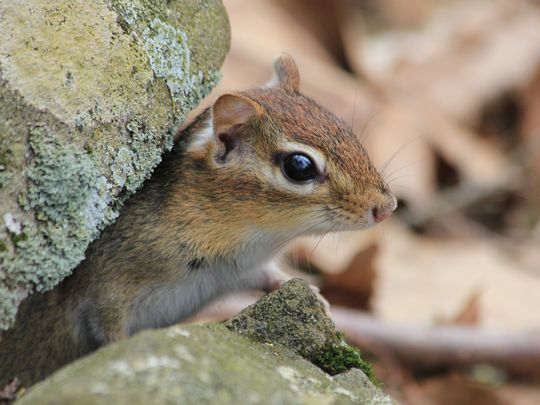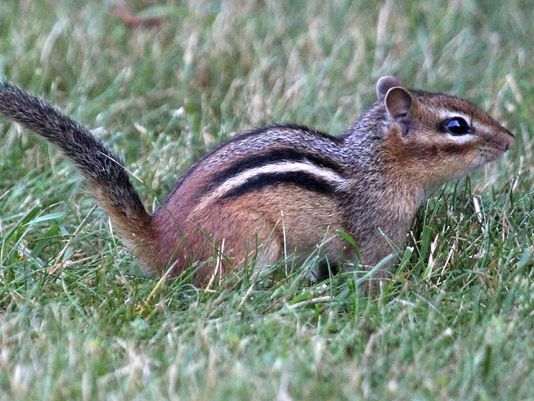Yes, there are more chipmunks scurrying around this year than in previous years — and get ready for more as fall approaches.
It’s hard to get an accurate count. The state Department of Environmental Conservation tracks the number of deer, bear, coyotes and more, but not chipmunks.
Naturalists, though, are confirming what many a country-road driver has noticed — there are a lot more chipmunks than usual this year.
With the caveat that he doesn’t have any hard numbers, Bedford Audubon Society Tait Johansson said there is clearly a chipmunk boom this year.
“I don’t know about unprecedented but it seems like there are more than there usually are,” he said.
“DEC does not routinely monitor chipmunk populations,” a spokesperson said in an email, “but our staff have also reported abundant chipmunk activity this year.”
The International Union for Conservation of Nature, which maintains a so-called “red list” of endangered species, lists the eastern chipmunk (Tamias striatus) as a species of “least concern,” being both widespread and abundant.
Eastern chipmunks are found from Nova Scotia to Louisiana, and there tends to be at least one per acre, according to the IUCN. When the population peaks, though, that number can reach as many as 30 per acre.
“You know how hard it is to count deer," said Bill Lawyer, formerly the director of the Greenburgh Nature Center. “This would be a lot harder.”
The reasons for this year’s chipmunk explosion are simple — more food and a mild winter. Last fall was known as a “mast year,” meaning a significantly abundant year for acorns. As Johansson said, the number of chipmunks in spring depends on “how much mast there was the previous fall — acorns and other tree seeds.”
"We had a banner year last year with acorns," according to Westchester County Forester Ted Kozlowski.
"When you have a lot of food, you have a healthier population and you have more babies," Kozlowski said. "I live in the woods and I am surrounded by chipmunks. I see them all the time. What I notice is they seem to be a little bigger, which means they are healthy."
This winter was not a rough one for furry forest dwellers — the mildest on record, according to weather.com — meaning more chipmunks survived through the cold months.
“They do reproduce more when there are more to reproduce,” Johansson said.
In fact, the warm winter could mean yet more chipmunks to come this year.
According to the DEC, “the lack of sustained snow cover last winter allowed chipmunks earlier access to food, increasing the likelihood of females birthing two litters this summer. So the current abundance of chipmunks is probably an indication that this year many female chipmunks gave birth to an early litter in April or May, and many will have a second litter in August or September.”

A single litter can consist of as many as 15 chipmunks, though three to five is much more common.
The good news is, chipmunks don’t really cause much damage, beyond getting into bird feeders and occasionally wreaking havoc in a local garden.
“They usually don’t get into your house,” Johansson said, though it has been known to happen.
Kozlowski said it's not just the chipmunks that have been in abundance this year. The mast year and warm winter was helpful for squirrels and mice, too, he said: "In general, last winter was a very good one for wildlife in general."
The increase in small, furry animals will, in turn, be good news for larger carnivores — the creatures that feed on chipmunks, squirrels and mice like birds of prey, coyotes and bobcat, according to Kozlowski.
"Nature will balance itself out," he said. "It always does."


